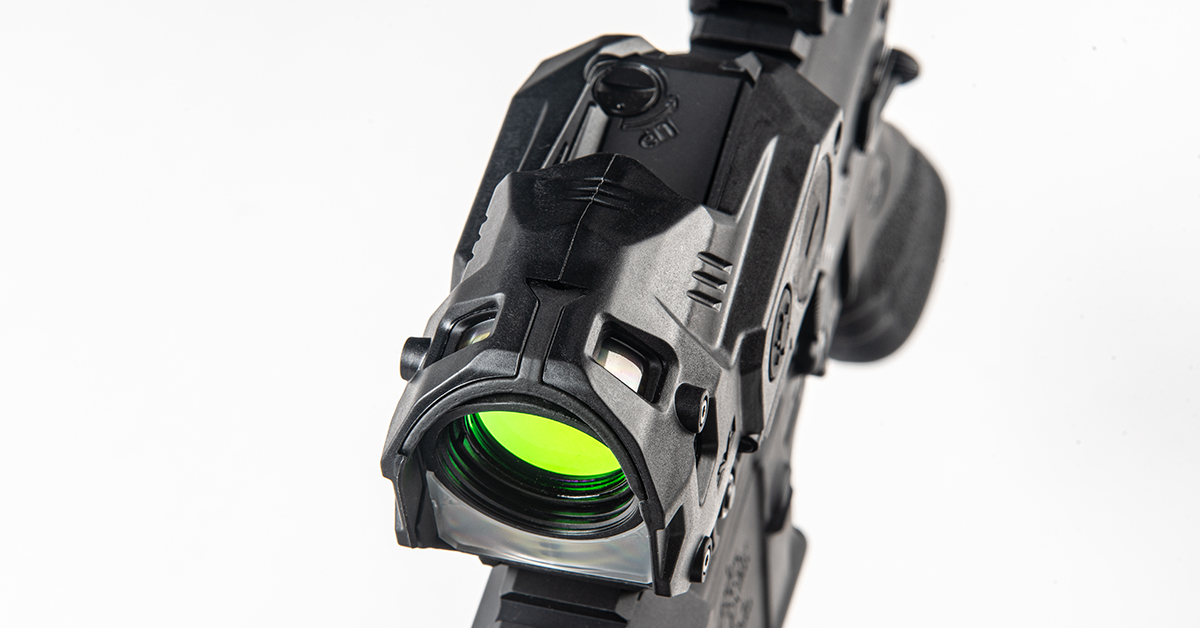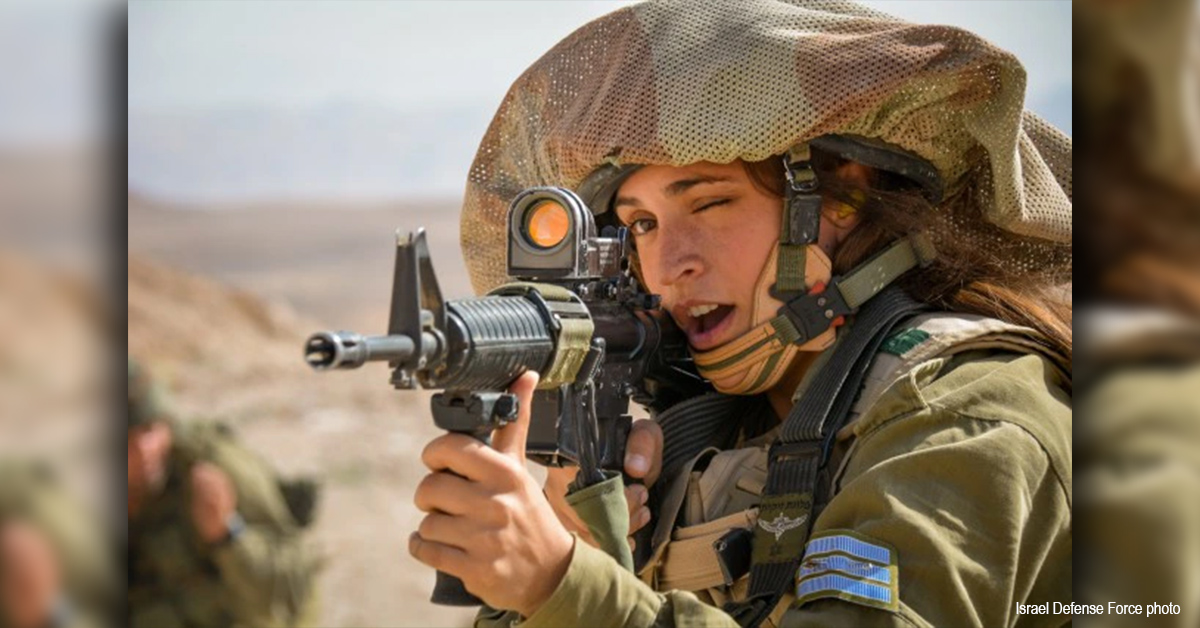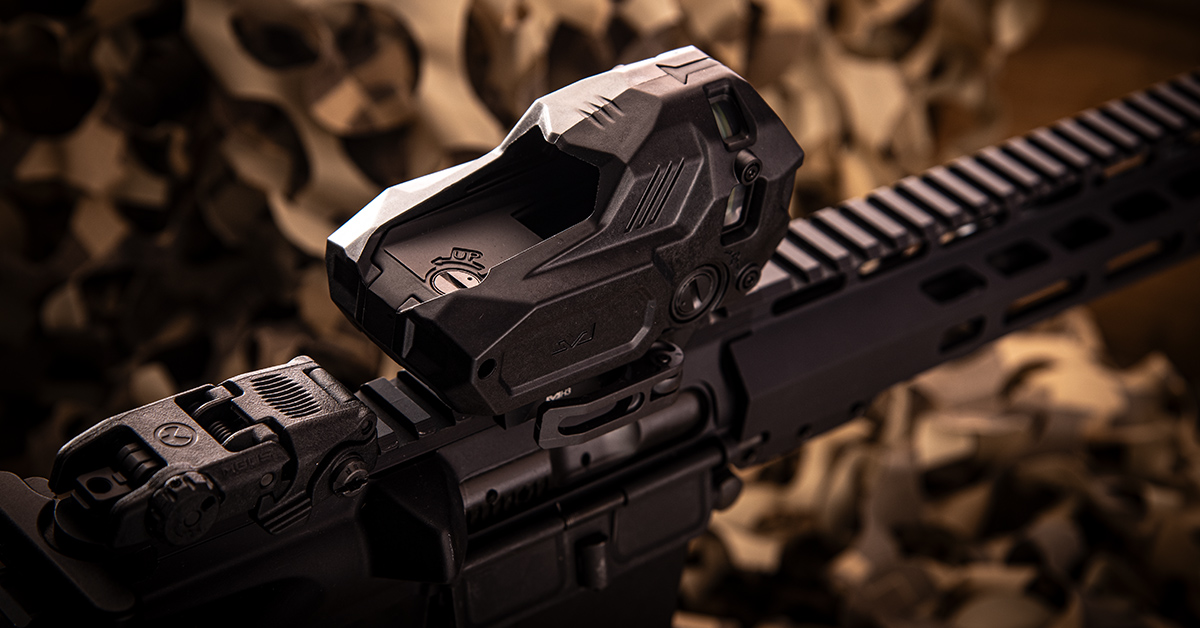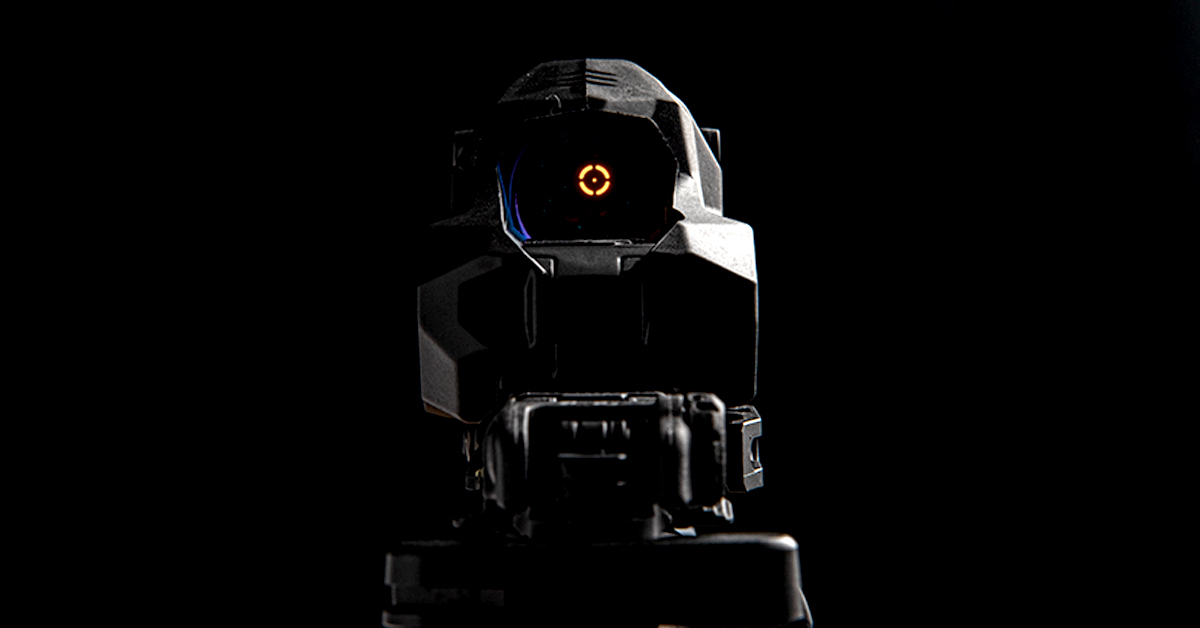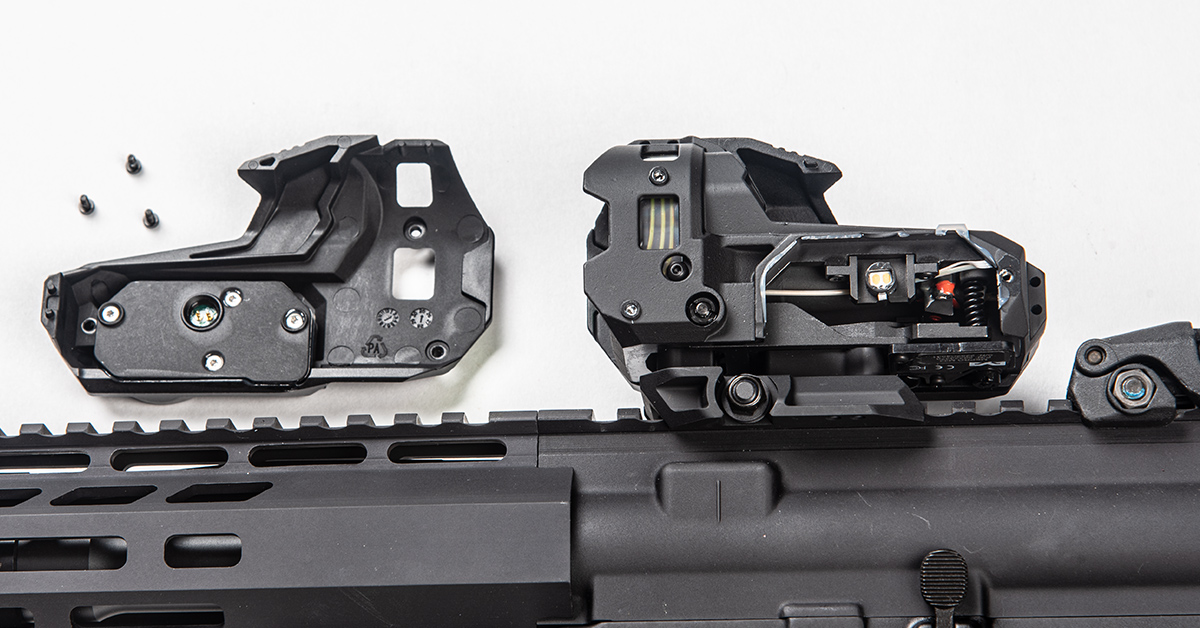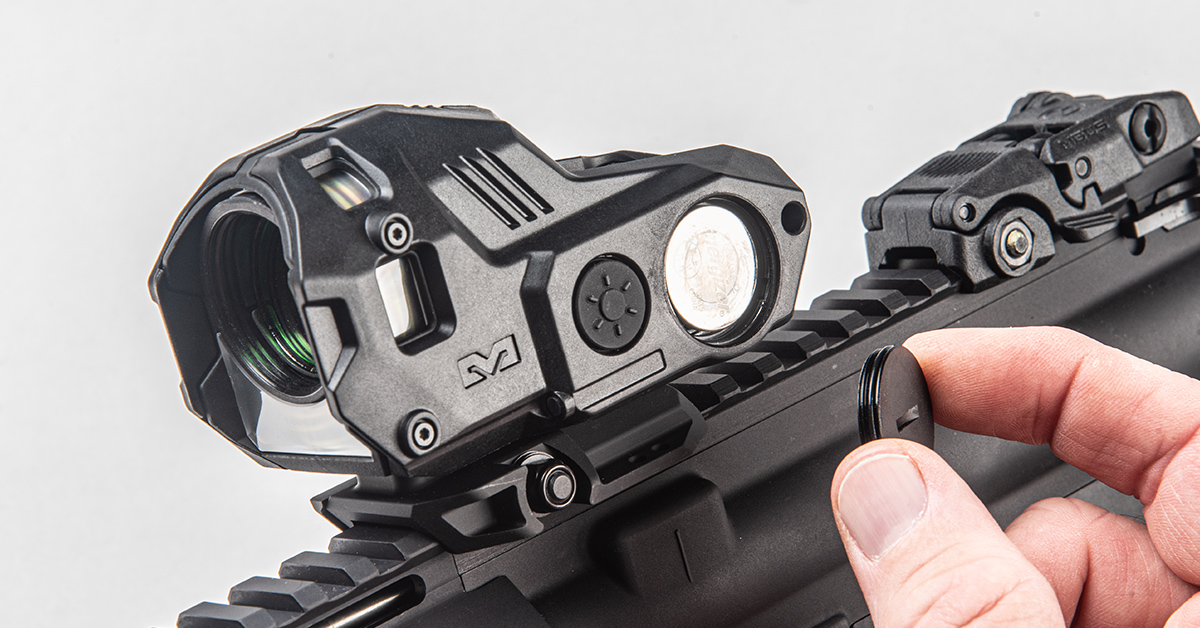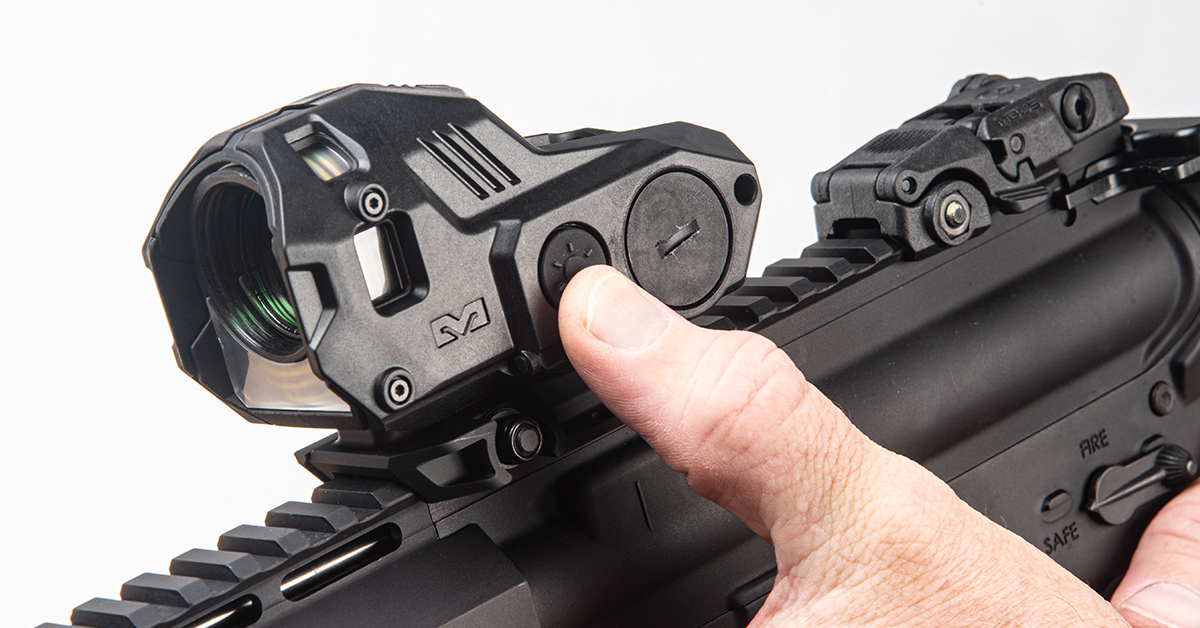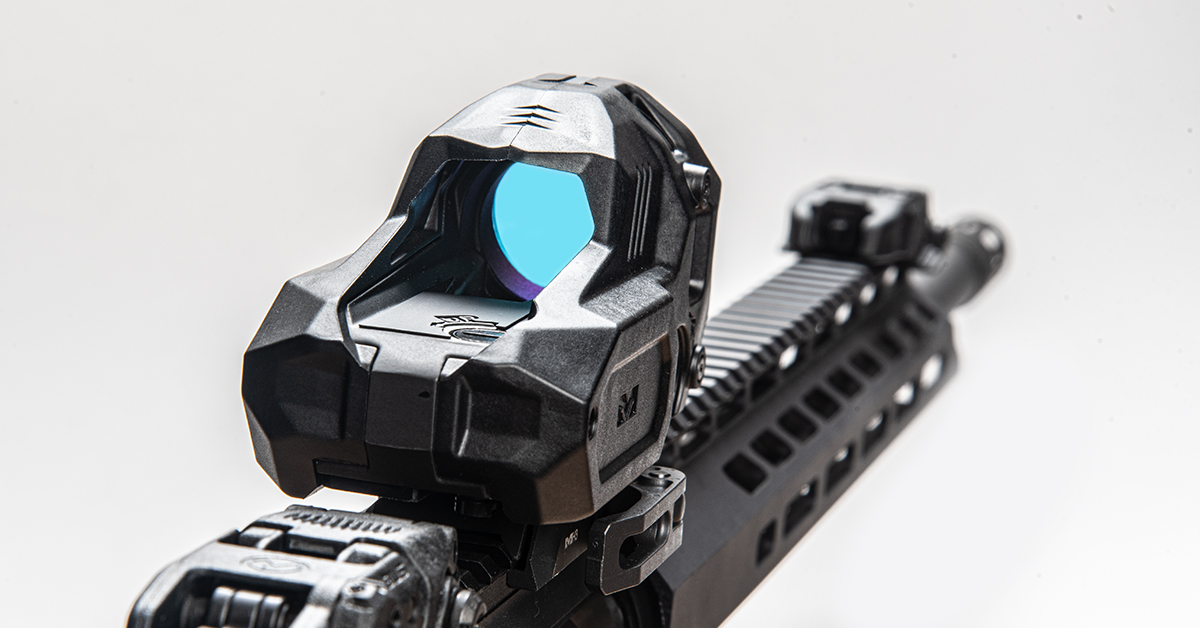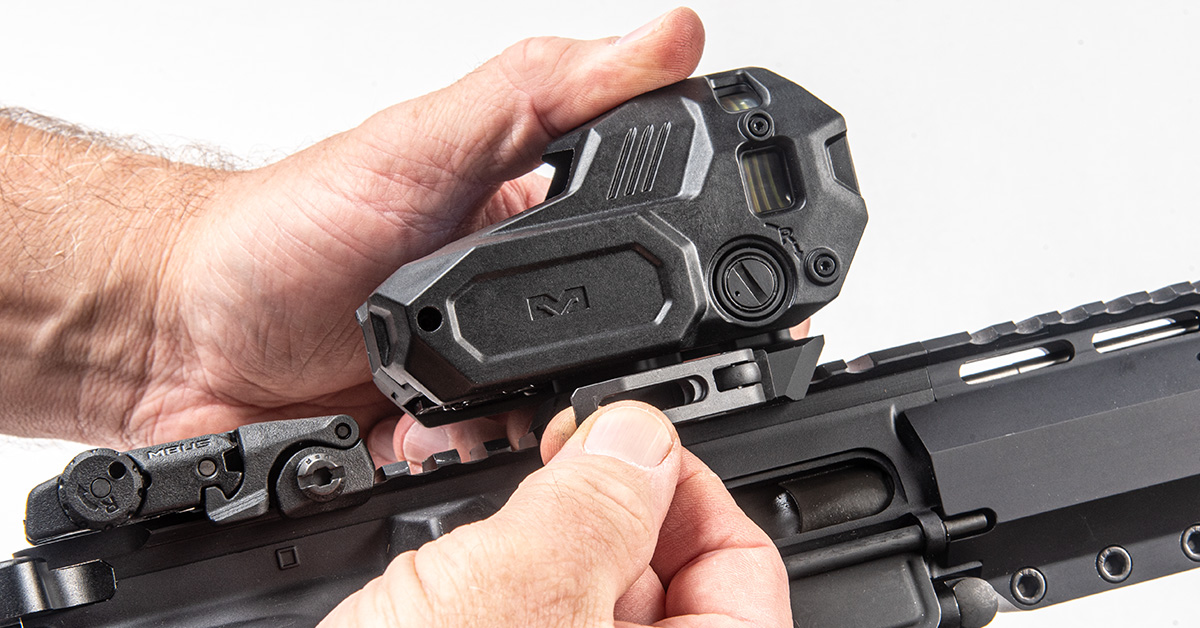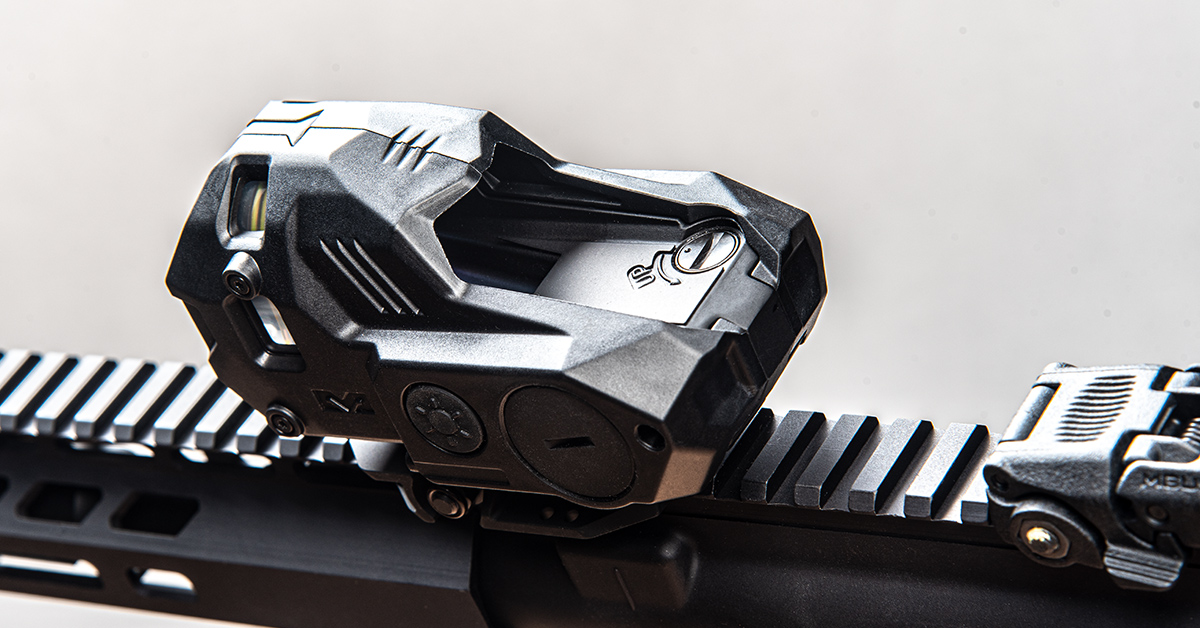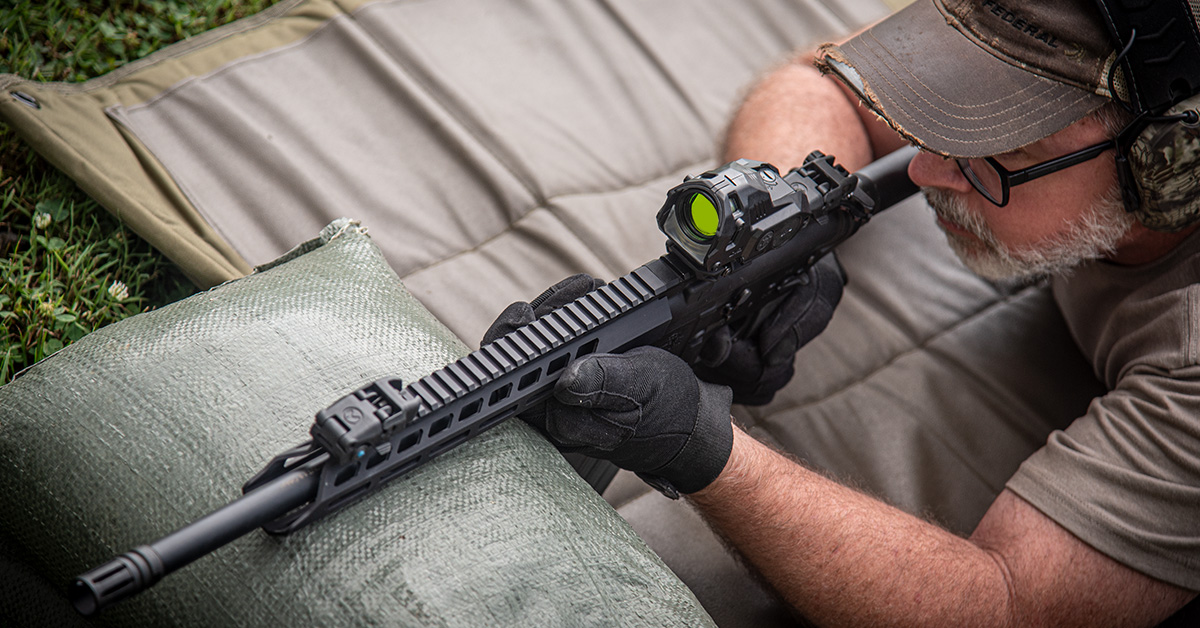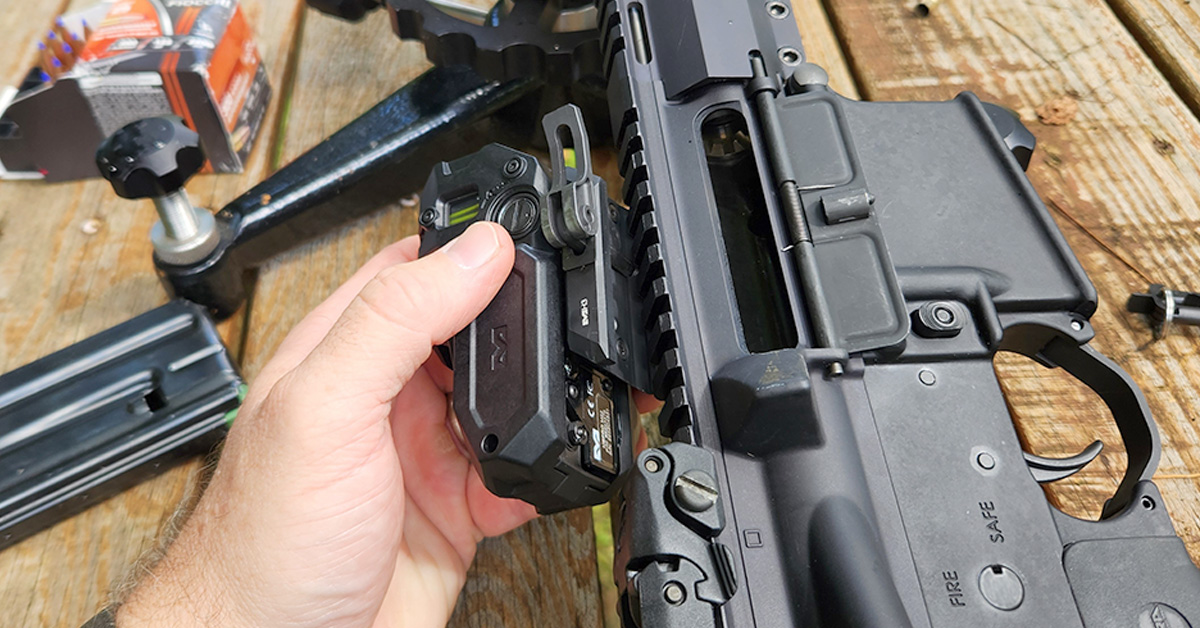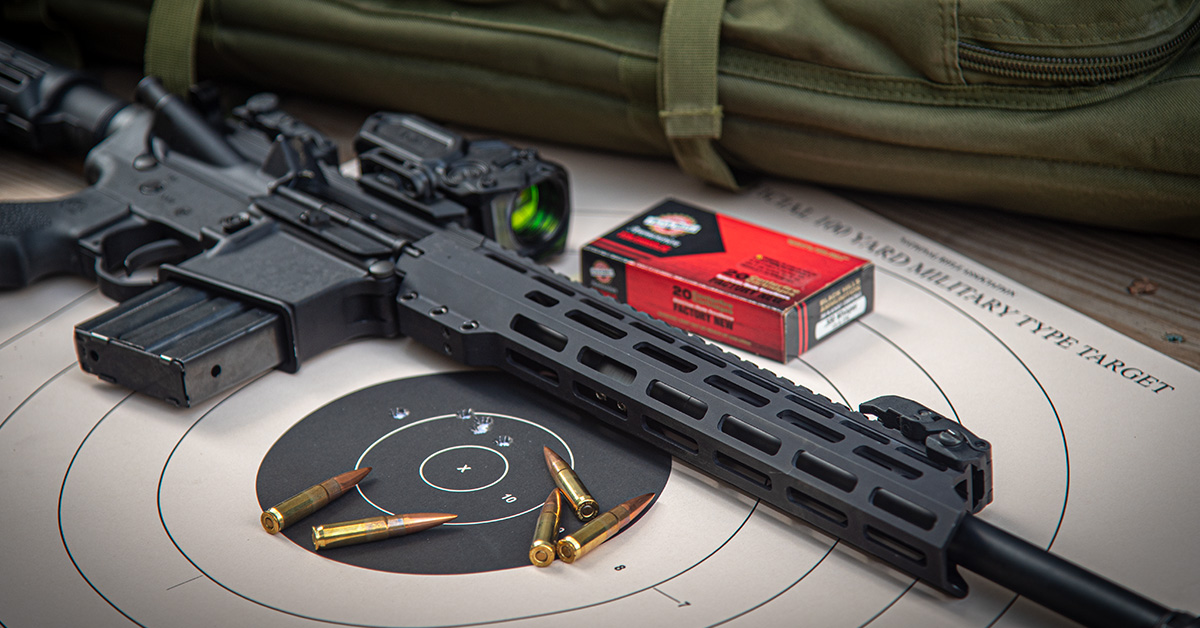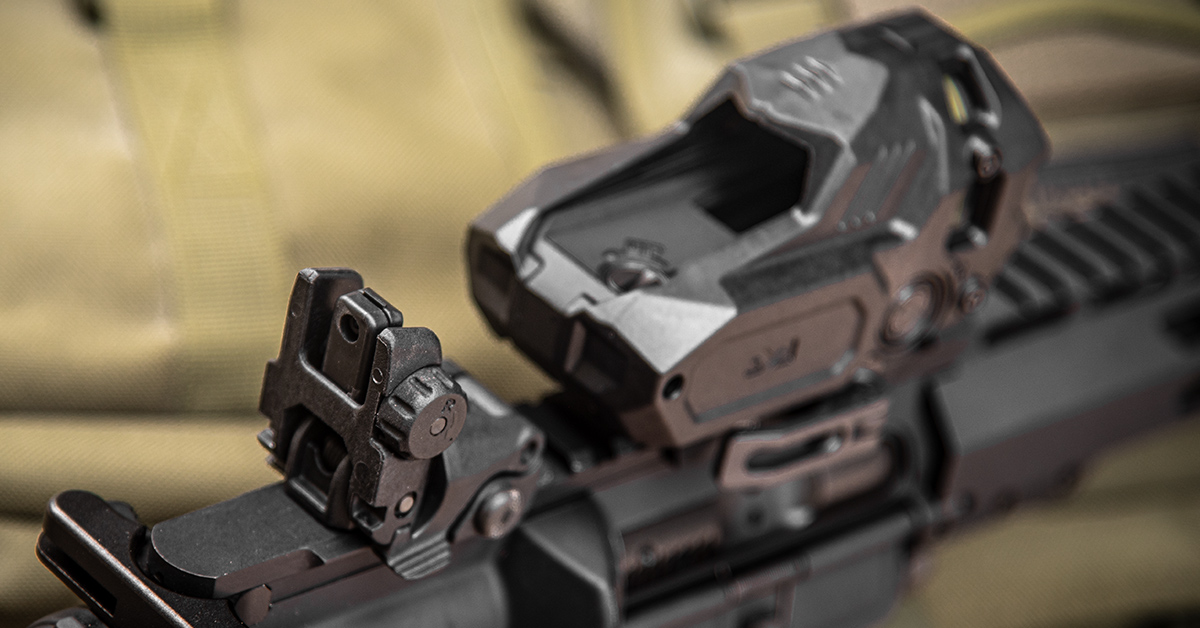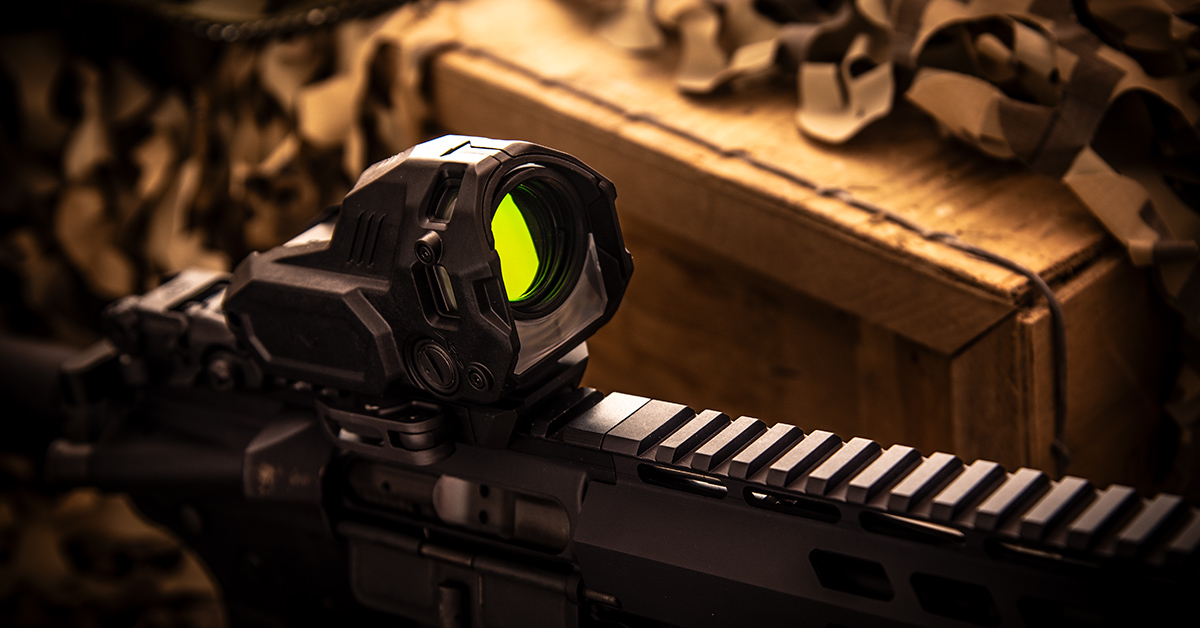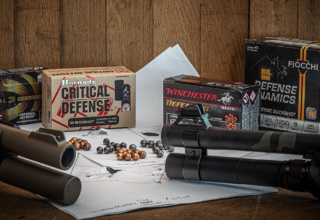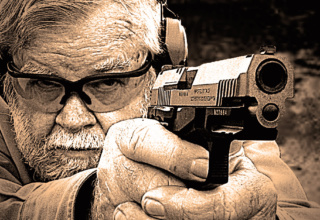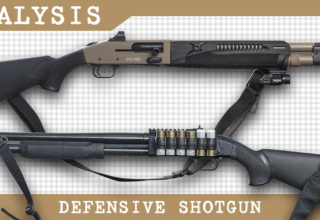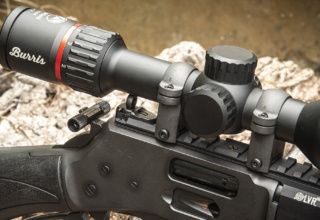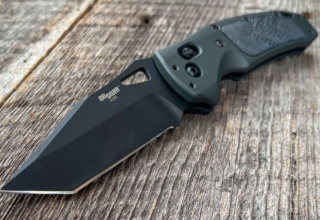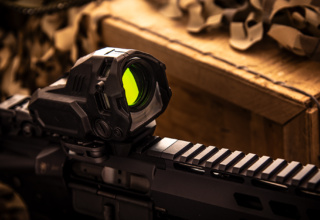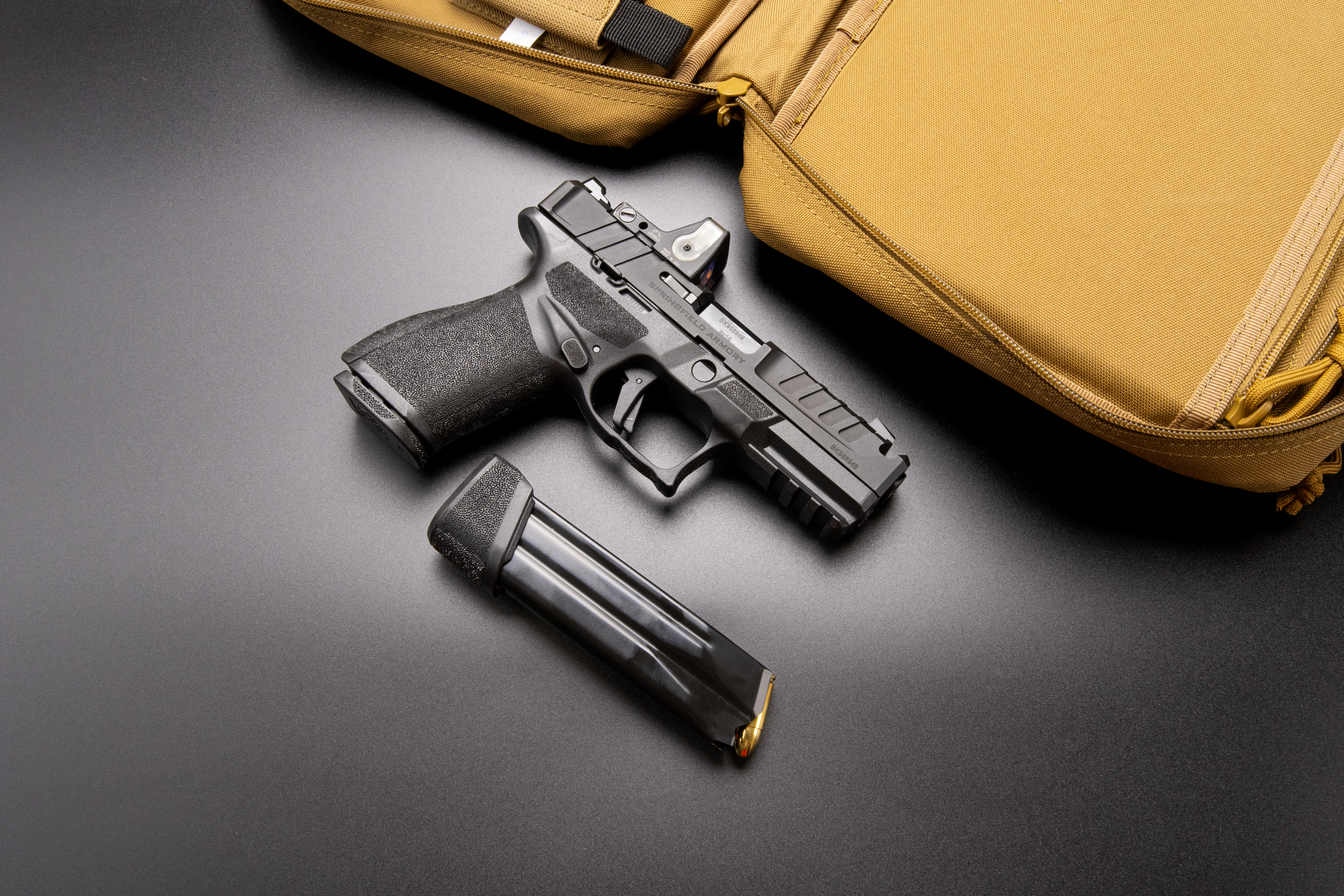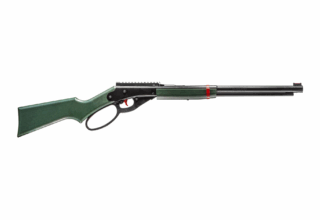Failure is not an option when personal/family defense is on the line, which is why you might want to consider the Meprolight M22 Pro for your “can’t afford to fail” defensive firearm
by Rob Reaser
Except for a defensive shotgun or a turkey shotgun, I admit having a difficult time relying on electronic sight systems. The biggest reason is that I find it nearly impossible to shake off the notion that an electronic sight system will fail me. That may be because more than one electro-optic has failed me in the past. A couple of times I remember red dots that simply worked one day and didn’t the next time I picked them up. No explanation, just…didn’t work.
Another instance happened when I had forgotten to turn a sight off, ran the battery down, and didn’t have a spare battery on me at the range. Granted, that was my fault. Still, placing blame didn’t solve the problem. I couldn’t shoot the gun. Trip wasted.
Iron sights, though, never fail. That is why they continue to be my primary choice for a defensive sighting system. They will never not work, and they demand regular practice sessions, which ensures my marksmanship skills stay sharp.
There are benefits, you see, to driving old school technology.
That said, I may have found an optic perfectly suited for defensive carbines and shotguns that provides all the advantages of an electronic reflex sight and yet will never fail me in the field. It’s the M22 Pro from Meprolight.
The M22 Pro is the latest iteration of the original M21 reflex sight developed for and still in use by the Isreal Defense Force (IDF). Powered by light-gathering fiber optics and tritium capsules and augmented as needed by a battery-powered light enhancer, the M22 Pro may be the “one sight to rule them all” in an end of the world as we know it situation. Or, it might just be a smart choice for anyone who hesitates to rely on conventional electronic sight systems.
Background: Born for Battle
Meprolight is part of the SK Group — a holding company of mostly defense-oriented entities based in Kiryat-Gat, Israel — with U.S. headquarters in Middletown, PA.
Around the turn of the century, the IDF approached Meprolight, requesting a new battle optic for its carbine platforms that required no batteries to operate. The result was the M21, an optic that utilizes fiber optics in combination with a tritium element to deliver a reliable, no-fail illuminated reticle that works in all lighting conditions.
Since 2003, the M21 has served IDF infantry on a host of weapon platforms, including the Tavor and AR variants.
Given the IDF’s seemingly continual threat engagement — and especially since Israel’s war with Hamas kicked off after the October 7, 2023, attack on Israel — the M21 has proven itself in the most austere battle conditions, and particularly in challenging urban combat environments.
Next-Generation M-Series
Meprolight introduced the M22 Pro seen here earlier this year. This was a follow-up to the M22 that debuted in January 2024. That model was the latest generation of Meprolight’s original M21 self-illuminating battle optic in use by military and LE elements the world over.
The M-series concept is simple and straightforward. This reflex sight uses fiber-optics to collect and direct ambient light to the unit’s emitter, allowing the emitter to project the aiming reticle onto the front lens, just as you find in any reflex red dot system. By virtue of the fiber-optics, the unit automatically adjusts illumination to ambient light levels. The lower the ambient light intensity the lower the projected reticle illumination. When you use the optic in full sunlight, the reticle is at its brightest. Move to a lower ambient light condition and the reticle illumination reduces.
Aside from the ambient light collection, the M-series also employs a tritium light source. In exceptionally low light conditions or in complete darkness, the tritium light projects a suitably bright reticle — one that gives you an aiming solution without blowing out your vision.
In short, reticle illumination automatically adjusts to the environmental light; so, you never have to compromise weapon retention or control in order to adjust brightness or to turn the unit on. It’s always on and it’s always at an optimal brightness level. As a result, transitioning between light and dark environments is seamless.
There is, though, one caveat to this system’s practical function and that is revealed when the shooter is in a darkened, low-ambient light environment and is aiming toward a target in a brighter ambient light environment. In this scenario, the M-series optic suffers what is called reticle washout.
Imagine you have taken position inside a darkened building and are looking out onto a bright, sunlit scene. Aiming toward an outside target, you will notice that the reticle looks washed out and is difficult to discern. That’s because the darkened interior you are in produces a low-illumination projection of the reticle. In other words, there is not enough ambient light for the fiber-optic element to gather and make the reticle bright enough to stand out against the bright outside target.
Meprolight has a couple options for mitigating reticle washout for those who have an original M21 or the standard M22 optic. These include a polarizing filter or a flash guard that screw onto the front of the optic.
This year, though, Meprolight directly addressed this issue with the release of the M22 Pro.
The M22 Pro comes with a factory-installed light module system. This system includes a switch and a CR2032 battery compartment integrated into the left-side chassis panel.
Here’s where things get interesting.
The M22 Pro is internally identical to the standard M22. By this, I mean that both models feature leads to power the fiber optic so that the reticle can be illuminated by a battery. It’s just that the M22 comes only with a flat side panel, containing no switch or battery compartment. Meprolight does, though, sell as an accessory a Light Module Kit that allows the user to convert the M22 to take advantage of the integrated electronic illumination system. Basically, the M22 is the same as the M22 Pro, only it doesn’t come with the light module panel.
The M22 has an MSRP of $499.99. The Light Module Kit is $124.99. The total price for the M22 plus the conversion kit is $624.98. The M22 Pro is priced at $579.99. So, if you are going to go with the battery-powered option (and I recommend you do, as we’ll discuss shortly), then it makes sense to opt for the M22 Pro out of the gate and save $50 in the process.
Installing the battery is easy enough since the compartment is on the side of the housing. You can use a flathead driver, coin, a cartridge case rim, or the supplied tool to remove and install the battery cap.
Forward of the battery cap is a simple pushbutton switch. Unlike most red dot switches, this button is large and quick to locate and operate even when wearing gloves.
Activate the light whenever you encounter a reticle washout condition. Hold the button for three seconds and the light comes on, illuminating the reticle enough to overcome the washout. Three illumination settings — low, medium, and high — allow you to scroll to the ideal illumination. When auxiliary illumination is no longer needed, long-press the button for three seconds and it will turn off.
The M22 Pro is offered with two reticle styles (MOA bullseye and triangle) and in two color options (amber and red). The amber isn’t exactly orthodox when it comes to conventional reflex reticle colors. Most are either red or green. The amber, though, worked well in testing and could be a big assist for those who have difficulty seeing red.
I tested the M22 Pro on a carbine-length AR-15 in .300 BLK, and it worked great for fast, close-quarter target acquisition; however, I believe this reticle would be best suited for defensive shotgun use. At longer distances (100+ meters), the combined 4.5 MOA line width and the 3.5 MOA dot diameter can easily obscure small targets.
The better option for carbine use, where precise aiming is desired at distance, would absolutely be the triangle reticle. The triangle will serve as “dot aiming” at close range while the tip of the triangle would give you full target/environment visibility at extended distances. But…to each his or her own.
The M22 Pro has a prominent (I’ll go so far as to stay “strong”) blue tint when looking through the viewing lens. This is a notch filter that helps optimize the projected light onto a lens when using a low-power light source. While this is an attribute in the M22 Pro’s “no illumination necessary” design, it does take some getting used to. The density of the blue may also be a necessary design parameter for the bright desert environment in which the IDF often operates.
For the M22 Pro, Meprolight developed a single-lever quick-release system. The M21 uses a twin-lever design, so the new model takes up less space on the Picatinny rail. The mounting system is smooth in operation, and tension is adjustable with the supplied tool or an 8mm hex driver.
Naturally, the M22 Pro is adjustable for windage and elevation. The supplied tool can be used for this or, again, use a cartridge case rim. Each click equals 1 MOA movement of the reticle. Directional arrows let you know which direction to turn for bullet impact shifts.
On the Range
Evaluating optics always begins with the necessary hassle of zeroing, and on test day, I really wasn’t in the best of moods for going through the procedure. It was blistering hot, with Tarzan-like jungle humidity deep in the holler where my range is located. Not the slightest breeze penetrated the dense picket of oak, walnut, poplar, and hickory trees surrounding the 100-meter shooting lane. Further, the gnats and other no-seeums were on a mission of terror.
Fortunately for me, zeroing the M22 Pro came quickly, as Meprolight evidently sets the reticle close to the mark at the factory. I set up a zeroing target at 25-meters and the first three-shot group was on paper, high and left by just a couple inches. Another three-shot group put me in the zone, then it was off to the 100-yard line for final adjustment.
Having my range situated in a mature hardwood forest setting makes it somewhat challenging due to shifting shadows and dappled sunlight hitting the target; however, that provided a good test of the M22 Pro’s performance across various lighting conditions. Combined with drifting clouds, the ambient light continually changed both at my shooting position and at the target. When my position fell into shadow, the reticle illumination dimmed while the target was in full sunlight. In this condition, where the reticle was a bit washed out, I simply hit the power button and brought the reticle illumination up to a suitable level. In the reverse condition (full sun hitting the optic and the target in shadow), the reticle proved a tad too bright against the 100-yard target. Placing my hand over the fiber-optic windows reduced reticle brightness, allowing me to take a confident shot.
Regarding the blue tint, or notch filtering, of the M22 Pro lens, it may be optimal for an arid, desert-like environment such as the Middle East, but in a predominantly green foliage setting, there is minimal color contrast, and the view is almost monochrome. Warmer colors like red, yellow, and orange are completely filtered out. If I had my ’druthers, I’d suggest that Meprolight dial back the notch filtering for the U.S. market.
Once I had the M22 Pro zeroed for 100 yards, I wanted to see how well the single-lever Picatinny rail mount would hold zero, so I removed it a couple of times during the evaluation process. From what I could tell, the zero held perfectly — meaning I have no concern about losing zero after removing and reinstalling the optic.
I said the zero held perfectly “from what I could tell” because the test model’s MOA bullseye reticle, as mentioned earlier, is not ideal for precision shooting. It is better used on a defensive shotgun or a CQB-only carbine. If precision point-of-aim/point-of-impact is your mission, then it is a better bet to get the M22 Pro with the triangle reticle. Nevertheless, I felt that the MOA bullseye reticle did well at 100 yards.
For this portion of the test, I set up an NRA Official 100 Yard Military Type Target. At 100 yards, the reticle’s 3.5 MOA center dot pretty much covered the target’s 6-inch black circle. Aiming simply meant covering the circle with the center dot, and this was done with the optic’s 1X lens (no magnifier was employed). With the 125-grain OTM .300 Blackout ammo I used from Black Hills Ammunition, I managed a 1.925-inch five-shot group (or a 0.94-inch four-shot group if you throw out the flyer). That’s nothing to complain about with a 3.5 MOA reticle at that distance. No doubt the triangle reticle would have tightened that group even more.
For this test, I Frankensteined a .300 BLK from some parts that were collecting dust in the shop. This included an older set of Magpul MBUS sights I found in a project remnant box, so I threw them on to see if they would co-witness to the M22 Pro reticle. The Mepro’s large viewing window made the open sight zeroing process a breeze, and once dialed in at 100 yards, the backup sights perfectly co-witnessed to the M22 Pro. And I do mean perfectly. The center dot sits right on top of and centered on the Magpul front sight post.
With this combination, there is no scenario in which this carbine does not have a dependable and accurate sighting solution.
Could you ask for anything more?
No.
Summary Judgement
You can’t swing a proverbial dead cat in the shooting industry without smacking into hundreds of variations of electro-optical sighting systems. Unfortunately, consumers cannot test them all nor can they run them all through the gauntlet to determine which ones have long-term merit in actual field use. Battle-proven designs, though, can provide solid guidance as to what optics and optic manufacturers can be counted on for personal defense.
Years ago, the Israel Defense Force commissioned Meprolight to develop a dependable, all-conditions battle optic. The result was the adoption of the M21 in 2003. That design has long passed the test of real-world combat effectiveness and is still in use by IDF troops on the ground today.
The new Meprolight M22 and M22 Pro models build on that proven heritage but in a more compact and updated form optimally suited for civilian defense and LE applications. So, whether you are looking for a reliable home defense/CQB-optimized optic that won’t fail you or you have your eyes set on an optic to see you through a long-term, societal-wrecking event, here is an aiming solution that you should strongly consider.
Meprolight M22 Pro Specifications
- Weight: 9.2 oz. (260 g)
- Dimensions: 3.9 x 1.9 x 2.7 in. (99 x 50 x 68 mm)
- Display Window Dimensions: 1 x 0.8 in. (25 x 20 mm)
- Reticle Color: red, amber
- Power Supply (primary): fiber-optic (day) / Tritium (night)
- Power Supply (auxiliary): 1x CR2032 battery
- Battery Life: 50,000 hours
- Height Over Bore: 1.5 in. (39mm)
- Windage/Elevation Adjustment: 1 MOA
- Total Windage Adjustment: +/- 60 MOA
- Weapon Mount: Picatinny rail quick-release (MIL-STD 1913)
- Water Resistance: IP67 rating (waterproof up to 1 m for 30 min.)
- Operating Temp: 40°F to +140°F (-40°C to +60°C)
- Storage Temp: 40°F to +160°F (-40°C to +71°C)
- MSRP: $579.99

